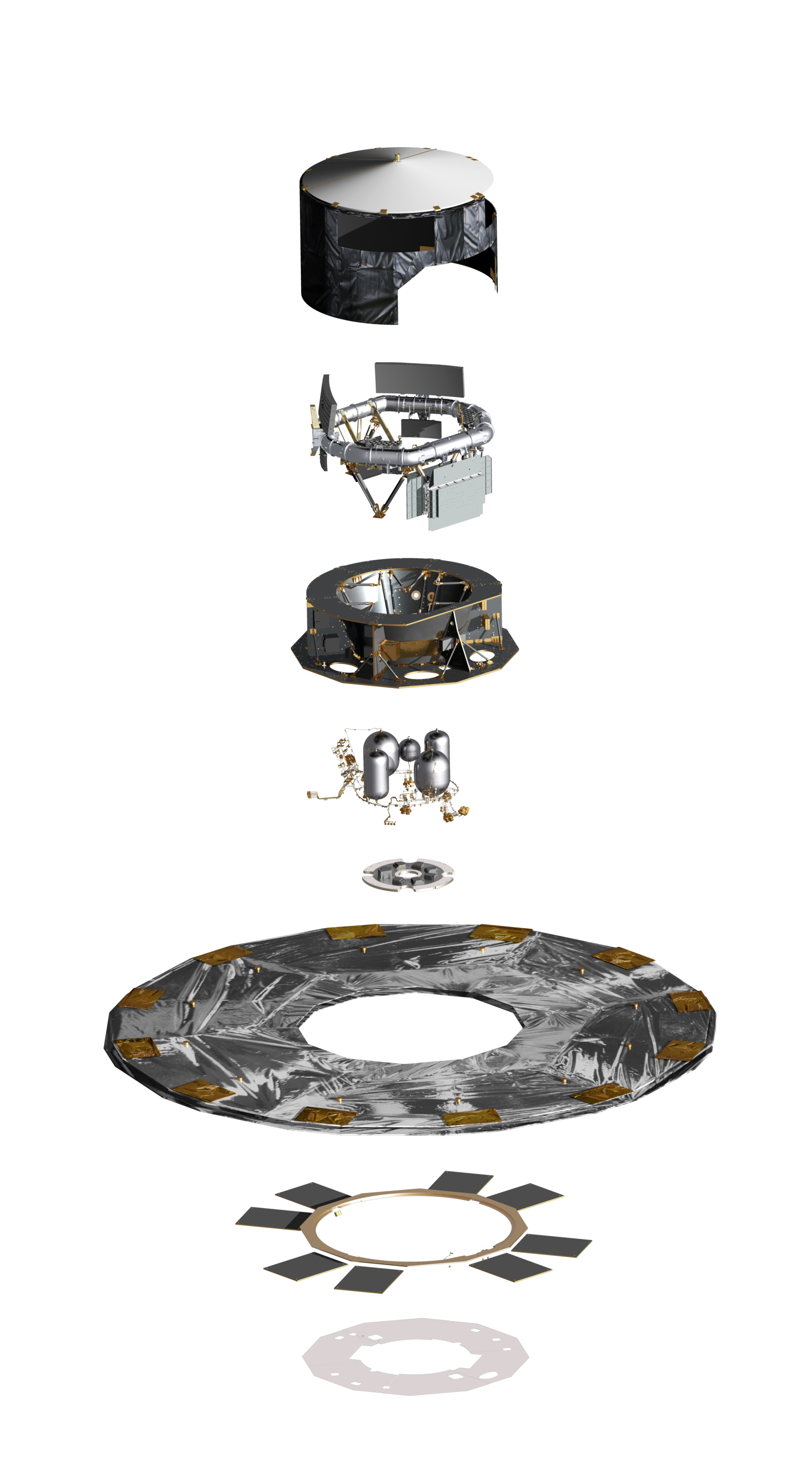Gaia: Spacecraft and Instruments - Gaia
Spacecraft & Instruments |
Exploded view of Gaia copyright: ESA/ATG-medialab |
|
The Gaia spacecraft is comprised of three major functional modules:
|
|
Payload & InstrumentsGaia's payload carries two identical telescopes, pointing in two directions separated by a 106.5° basic angle and merged into a common path at the exit pupil. Three instruments detect the light collected by these telescopes.
|
|
| Find out more about the industrial involvement in the Gaia spacecraft here. | |
- Removed a total of (2) style text-align:center;
- Removed a total of (5) align=top;
- Removed a total of (1) border attribute.
- Removed a total of (1) cellpadding attribute.
- Removed a total of (1) cellspacing attribute.








































 Sign in
Sign in
 Science & Technology
Science & Technology
